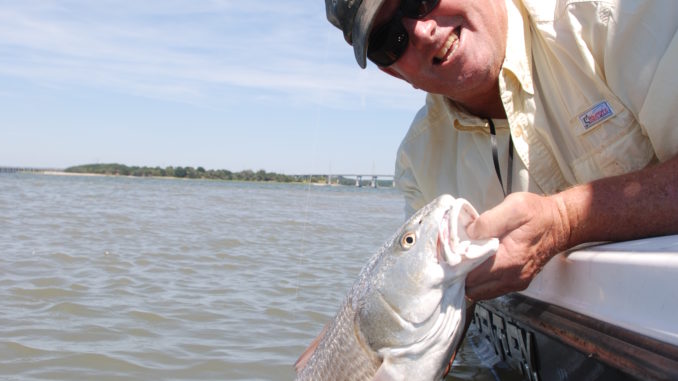
Reds, trout and flounder are the headliners around Hilton Head this month, but there are plenty of supporting species.
An angler looking to find a little bit of everything on a late-summer fishing trip could do a lot worse than setting his sights on Hilton Head Island, where great inshore fishing for traditional species exists and where the warm waters of the Atlantic bring in a wealth of scaly summer visitors. To top it off, the waters around the island are considerably off the beaten tourist path compared to the Charleston and Myrtle Beach areas.
Like much of the rest of the South Carolina coastline, redfish are near the top of most anglers’ lists. Flats and marshes — prime redfish habitat — are abundant behind the island, and on most days, that’s where you’ll find Dan Utley, the retired football coach turned full-time fishing guide.
“Once you get into August, the middle of August, and September, the days start getting shorter, and the water temperature starts cooling off, so the redfish start putting the feed bag back on,” said Utley, who operates Fishin’ Coach Charters. “Whether it is low water or high water, you want to go to areas that average two feet deep. On high water, you’ve got to go back in the grass; low water look in the feeder creeks and fish around oyster beds, incoming tide or outgoing tide.
“On the incoming tide, you want to look for flats where the redfish typically want to go back up into the grass and follow the little channels that lead them into the grass; they’re going to go in there when there is just enough water in the creek to swim,” he said.
Utley prefers natural baits in the summer; he can better use their natural feel and smell to tempt reds rather than just the sight and sound of an artificial bait.
“In the summer, I like mud minnows and cut fish,” he said. “It can be mullet, menhaden, bluefish or ladyfish that you’ve caught. That smell in the water attracts reds because they’re not super-aggressive sight feeders. The mud minnows, they’ve got a little flash to them, and they typically hide around that real-shallow oyster bed area or edge of the grass area where the red fish are traveling. So that’s a food that they’re going to target.”
Finding redfish flats around the Hilton Head and nearby Beaufort is as easy as throwing a dart at a map of the area. Utley’s favorite areas include the Chechessee River off Port Royal sound, the main Colleton River near the Waddell Mariculture Center, the Broad River inland from the SC 170 bridge, and the entire stretches of Mackays and Skull Creeks.
Of course, redfish aren’t the only game in town this time of year. Fishing live baits such as shrimp and mud minnows under a popping cork, Utley catches plenty of speckled trout and flounder as well.
“This year, the best trout bite has been on the high water in-coming and the high water outgoing,” he said. “Areas you want to fish are points where creeks split off the main river, and go back up into the marsh where there’s a point and you have oyster beds on either side and the current flows over the oysters and makes little eddies. You want your bait to travel in the current. Those trout will hang off in the eddies and come out into the current and attack the bait.”
The same spots where Utley finds redfish are where he catches most of his flounder. One reason he’s such a big fan of mud minnows is when he gets a bite, he’s never exactly sure what he’ll be reeling in.
“While you’re fishing for redfish, if you’re floating mud minnows in a moving current around oyster beds, that’s where the flounder like to hang out,” Utley said. “Our flounder are really shallow-water fish, especially in the summertime. You’ll find them dispersed all through the marsh. Those small feeder creeks where all the bait travels is where flounder will lay up waiting for them.”
Guide Charlie Beadon of Hilton Head Fishing Adventures shares Utley’s affinity for redfish, trout and flounder. The good thing about August is the ability to turn an inshore slam into a whole series without having to return to the dock. Tarpon are kings along the southern coast and frequently enter Port Royal Sound to prove it.
“It mostly depends on what people want to fish for,” Beadon said. “If somebody specifically wants to go tarpon fishing, we can specifically target them. A lot of folks just want to go catch whatever, and in that case I’ll put out a spread for shark, tarpon, whiting or anything else that wants to bite.”
Surprisingly, Beadon can target a number of inshore and nearshore species without ever having to pull anchor. He varies his catch by varying his baits, and accordingly, the size tackle he uses.
“That’s one thing I always tell people, you’ve got to diversify your baits a little bit — not only your baits, but your rod sizes. A tarpon rod, that’s going to be 20- or 25-pound tackle with 50- or 80-pound leader; I’ll have a live bait on there,” he said. “On another rod, a big spinning rod, I’ll add a little bit of wire on the end of it and a big chunk of fresh cut bait. That’s going to be the shark rod. I’ll also rig some smaller spinning rods with a Carolina rig and a piece of shrimp. That’s how we’ll pick up whiting, black drum and ladyfish. We also get a lot of bluefish and Spanish mackerel out here, too, especially during the summer, so I make sure I have a couple of light rods rigged with wire leaders.”
Fishing the correct location is another factor in catching multiple species from the same spot. For the most part, Port Royal Sound is a big, watery sandpit. Scattered throughout the sound are oases of hardbottom. That’s where the fish hang out.
“Those hardbottom humps are what makes those spots good,” Beadon said. “You’ve got all that sand in the sound, then you’ve got those hardbottom humps, and that’s what congregates the fish. It not like it’s a big secret; they’re listed on the map.”
Catching sharks around Hilton Head is more akin to weeding through sharks to get to other species of fish. Not getting bites is not a likely prospect; even if it’s just catching 3- to 4-foot sharks all day, the action is plentiful.
“We just anchor up right on top of a hump or right in front of it in about 35 feet of water,” Beadon said. “That’s one of the things I hate about tarpon fishing: the sharks. I mean, they can get brutal. They can get so bad that you just have to move.”
DESTINATION INFORMATION
HOW TO GET THERE — Hilton Head Island is south of Beaufort, accessed from I-95 via SC 278 at Exit 8. Two public boat ramps are popular, and they’re at either end of the SC 278 bridge as it crosses from the mainland to the island. There is an exit to Pinckney Island in the middle of the bridge but there is no access from Pinckney, a National Wildlife Refuge.
GUIDES/FISHING INFO — Capt. Dan Utley, Fishin’ Coach Charters, 843-368-2126, www.fishincoach.com; Capt Charlie Beadon, Hilton Head Fishing Adventures, 843-592-0897, www.hiltonheadfishingadventures.com. Southern Drawl Outfitters, Bluffton, 843-705-6010. See also Guides and Charters in Classifieds.
ACCOMMODATIONS — Hilton Head Island Visitors and Convention Bureau, 800-523-3373, www.hiltonheadisland.org/
MAPS — Maps Unique, 910-458-9923, www.mapsunique.com, Sealake Fishing Guides, 800-411-0185, www.thegoodspots.com.

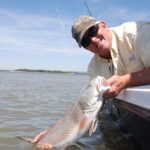
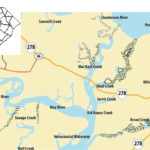
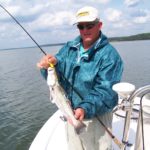
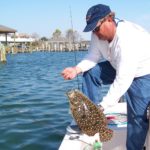
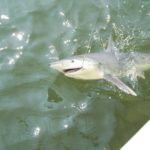
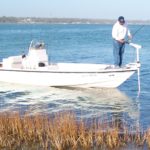
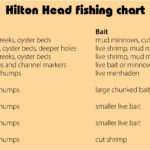




Be the first to comment